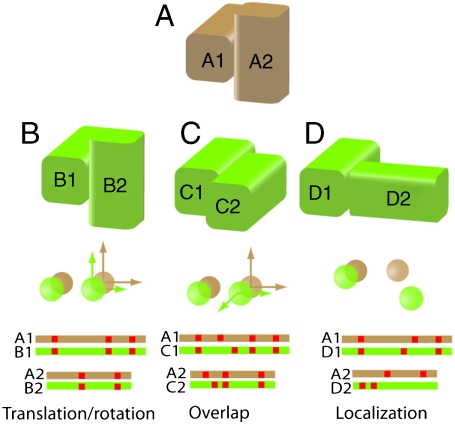Fig. 1.
Types of geometric conservation and their measures. Protein complex A is compared here to three other complexes B, C, and D. Typically one subunit is superposed on a structurally similar subunit in the complex to which it is being compared (i.e., A1 would be superposed on B1) and the transformation that relates the first subunits is applied to the second so that all proteins are in the same coordinate system. Measures of conservation generally involve calculating: the transformation (translation/rotation) required to optimally superimpose the second subunits on each other (brown/green arrows); distances and angles between the centers of mass of the second subunit (brown/green spheres); and the alignment (independent of residue identity) of interfacial residues in a primary sequence alignment of the two subunits (red squares). Although there is some similarity between A and each of the other three complexes, recognizing it will depend on which measure is used (see text).

